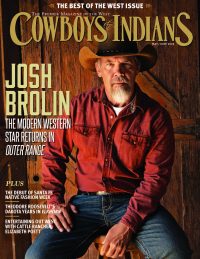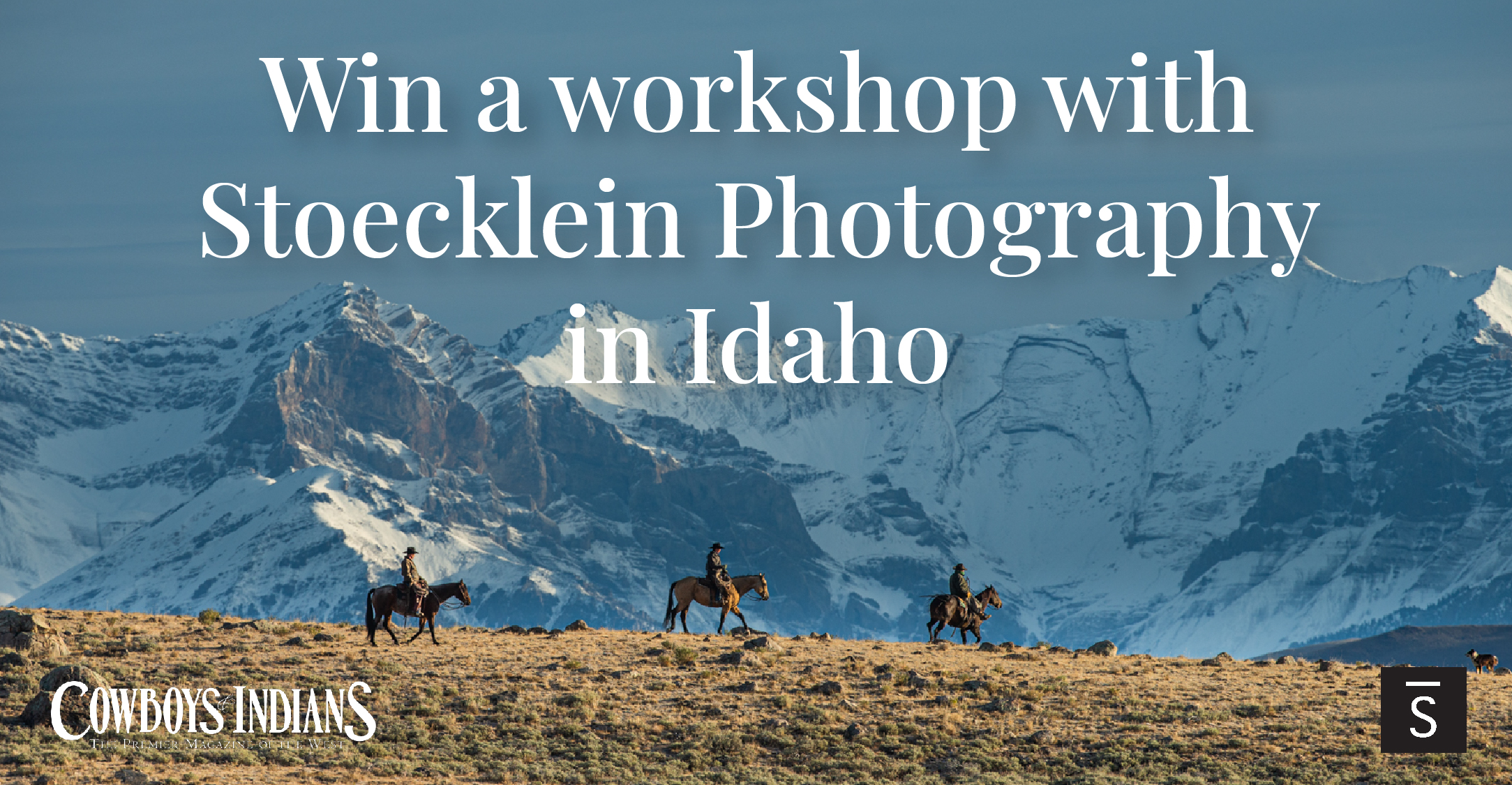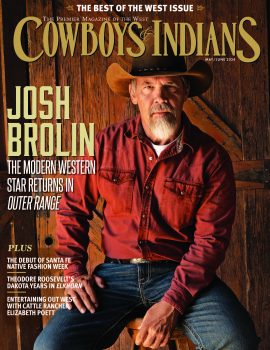He owns western acreage the size of small countries. And, boy, can you get some good shots on the media mogul's conservation ranches.
It’s dinnertime in the main lodge at Vermejo Park Ranch. Longtime guide and cowboy poet Frank Long commands the attention of guests who’ve just polished off a repast of authentic ranch cuisine. A slightly hesitant tap of a fork on a water glass slices through the rumble of bantering and note-comparing about the day, spent variously hiking, hunting, fishing, wildlife viewing, and birding. For much of the day, eyes have been looking through camera lenses, but now they all turn to the head of the table.
Long’s been a hunting guide on the ranch for 19 years — mostly leading hunts for elk, deer, and occasionally bear — but at the moment he’s become a bit of a bard. With minimal goading, he begins to recite some original verse that pays homage to the ranch’s creek-like namesake “river,” the Vermejo, one of many fishing spots that have made these hundreds of square miles an outdoorsman’s haven for a century.
... The Vermejo cuts a long, thin swath / And finally flows into the sea. / The name means red, the Indians said. / But does it know what its fate is to be? ... (Long swears he dreamed up the verses while dozing lakeside with a friend — both pals with fishing rods firmly in hand.)
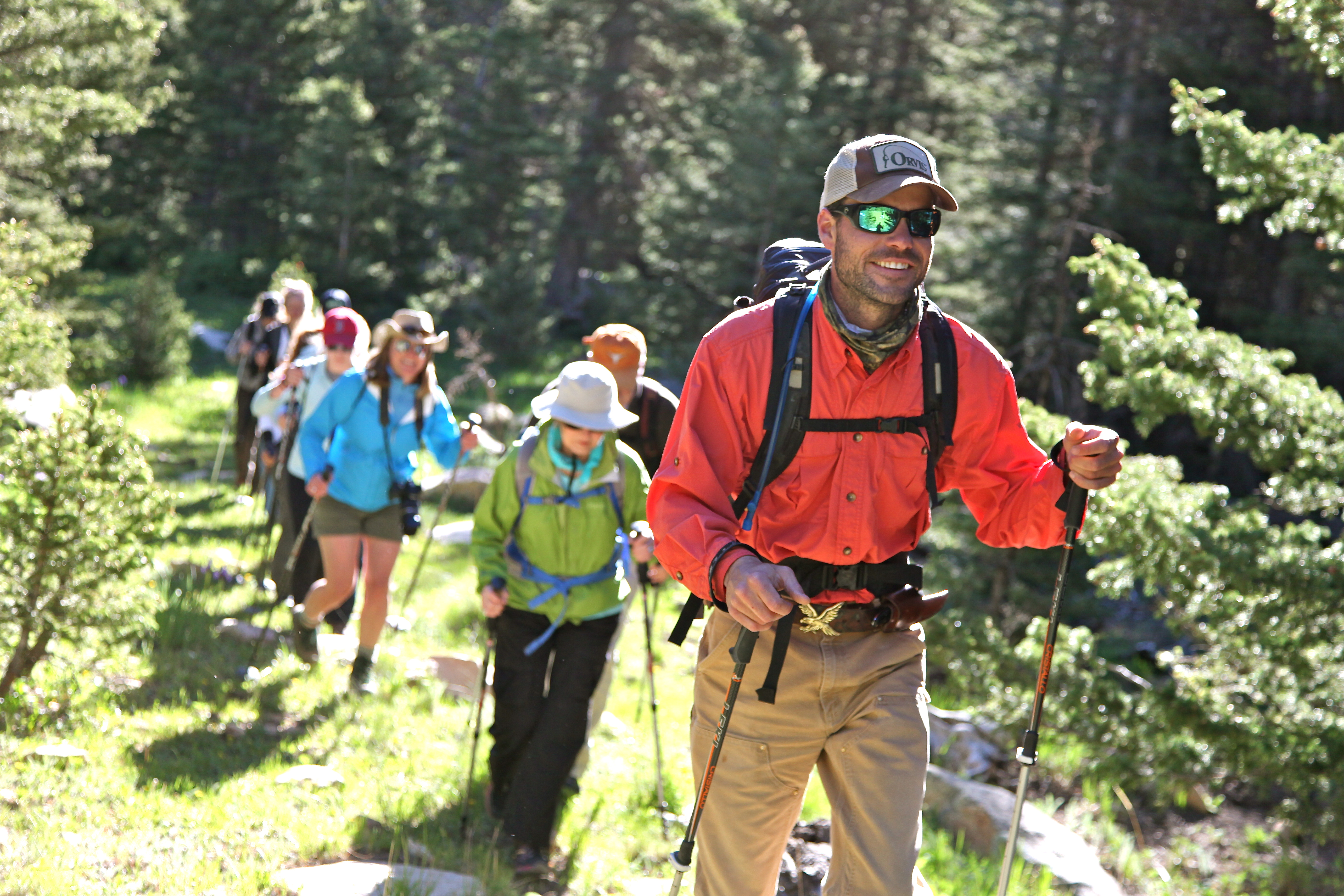
The fate of any visitor to Vermejo Park Ranch, the biggest of Ted Turner’s massive conservation properties, is to know the exhilaration of reveling in nature’s widest open spaces. At 585,000 semiarid acres, it is the largest contiguous privately owned property in the West, spanning 920 square miles in New Mexico and Colorado, from the Great Plains to the Sangre de Cristo Mountains.
That’s plenty big enough for the approximately 8,000 Rocky Mountain elk, 1,500 North American bison, 2,000 mule deer, 500 pronghorn antelope, 100 feral horses, and 200 species of birds that flourish in five ecosystems, along with 1,094 species of plants. And it’s plenty big enough for guests who come with cameras to explore the great outdoors and capture nature unobstructed.
It’s all part of the vision of Ted Turner, whose newly minted eco-adventure program, Ted Turner Expeditions, makes the land accessible not only at Vermejo in northeastern New Mexico but also at his Ladder Ranch in south-central New Mexico and at a third Turner property, Sierra Grande Lodge & Spa in Truth or Consequences, New Mexico, which offers excursions to his Armendaris Ranch.
Under Turner’s ownership and stewardship, all the properties remain self-sustaining, ecologically sensitive, and dedicated to conservation of native species, says 15-season ranch veteran James Reidy, Vermejo’s activities director. “It’s no secret that Mr. Turner wants to provide the best nature tourism venues in the world, and no one really doubts that probability.”
Much has happened on the land’s photogenic expanses. Vermejo’s history, which goes back to the Jicarilla Apache Indians and the Maxwell Land Grant, is as rich as its coal and gold mines once were. Its recent history begins with Chicago grain merchant William H. Bartlett, who bought the spread in 1902, built many of its well-known trout fishing venues, and eventually reintroduced elk that had previously been hunted to near-extinction. In 1926, his younger son’s widow, Virginia Bartlett, sold the ranch to Los Angeles Times Mirror owner and real estate investor Harry Chandler. At this private wilderness hideaway, the tycoon entertained the VIP likes of Herbert Hoover, Douglas Fairbanks Sr., and Mary Pickford until the 1930s, when he opted to lease his land to cattle ranchers.
In 1948, Texas industrialist W.J. Gourley bought Vermejo and increased the acreage to 480,000. Then in 1973, Pennzoil Corporation purchased the property and expanded its holdings to 588,000 acres, deeding nearly 100,000 acres to the U.S. Forest Service in 1982. Turner’s 1996 purchase ended cattle ranching in favor of raising genetically pure Castle Rock bison and focusing efforts on conservation.
According to his foundation, “Turner lands are innovatively managed to unite economic viability with ecological sustainability.” At Vermejo, that means welcoming a maximum of 50 guests for hunting, fishing, and eco-minded adventures. Like a lot of the guests — many of them repeat — I’m here for the relaxation of the wide open spaces, the hiking, and wildlife viewing. I’m a casual hobbyist at best with the camera, but many of my fellow guests have come specifically for the photo ops that attend all the invigorating outdoor exploration.
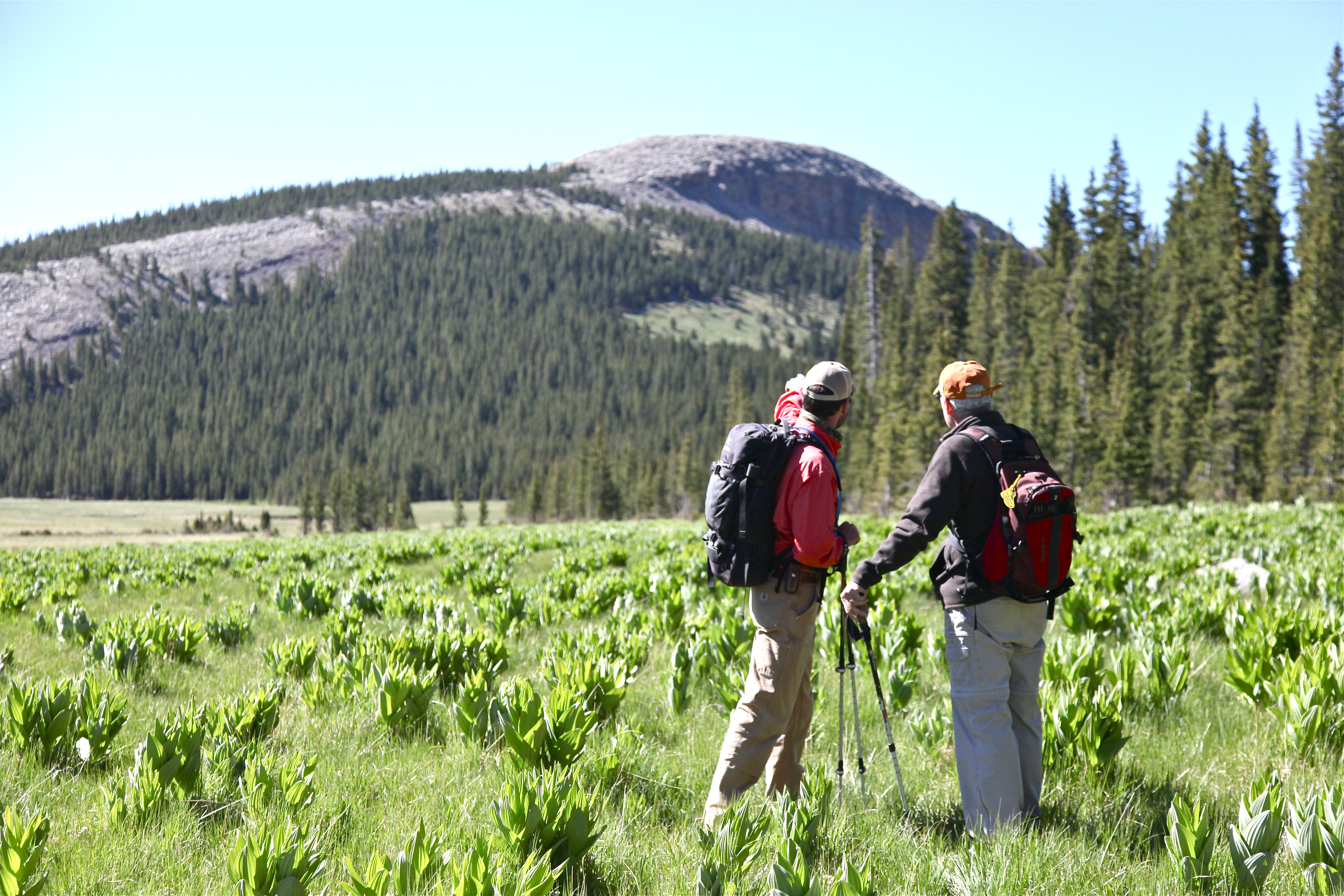
The place doesn’t disappoint. Nor does Long. During our packed days of wildlife spotting, the Montana native entertains with his gift of gab. Sometimes we are on foot, hiking. Sometimes we’re covering ground in his 1989 Ford pickup. We cruise past adobe ruins; traverse soggy plains; climb rocky, rutted hills; cross abandoned railroad tracks; and ford the shallow and narrow Vermejo. Long’s always at the ready with a quip like “Growing old is mandatory. Growing up is optional.” But he’s serious about leading a photo safari in search of the biggest bull elk with the grandest rack. And everyone in the truck has eyes peeled right along with him.
As we learn from photographer Sean Fitzgerald, who teaches small, personalized workshops on the ranch, it’s not always the big drama that makes a great image. The ranch constantly reveals itself, a little at a time, and that’s how he encourages people to shoot it. The trick, Fitzgerald says, is not to be overwhelmed but to slow down and focus — both lens and mind. “The more I’m here, the more I’m astounded by Vermejo’s nature and history,” he says. “You really can find new and un-photographed things here every day.”
To capture Vermejo and the other Turner Expedition properties — to capture nature just about anywhere — he advises that people leave their minds open to serendipity. Schooling people on how to “think like a real photographer,” he offers his mantra: Be ready to switch lenses, pronto.
“Even if you go out to shoot wildflowers, revel in the joy of the unexpected if a bear runs right past you, or you come upon four coyote pups bouncing on the nearby rocks,” Fitzgerald says. “If you are a flower shooter, you can go to town with the tiniest, most beautiful blooms and great landscape opportunities.”
Wildflowers, aspens, streams, mountains, elk ruts, bat flights, mining camp ruins, abandoned homesteads, ghost towns, black-footed ferrets, bison, prairie dogs chomping away — the land and its inhabitants are actively on display at Vermejo. And there’s plenty of room and plenty of personalization on the photo tours, so you can pick your spot and not see another person for hours — if at all. “You can’t do that in Yellowstone, where you might get run over by a 30-foot RV,” Fitzgerald says.
Which, to his way of thinking, makes Vermejo an ideal place to learn, work, practice, and progress with existing light as well as with nighttime conditions. “We’ll work with you until you have the picture you need,” Fitzgerald says. Not to mention, after the light’s gone and the camera equipment’s packed up for the day, they’ll get you back to the lodge, where there’s great grub and cowboy poetry waiting.
A day out shooting works up an appetite, and the food hits the spot. I’m just licking my fork clean as Long’s wrapping up with a couple of final stanzas: Like the aspen, the grass, and the stars in the sky, / God must have fit me into his plans. / Vermejo game and my soul it saved, / Now this old man understands.
So spread my ashes on top of Spring Canyon, / Up where the wild wapiti roam. / I won’t be dead in this land of red, / I’ll just be right there at home.
With its evocations of all that is wild and free here at Vermejo, the poem gives me a second wind. Maybe not enough to set up a tripod, but certainly enough to go outside to enjoy the star-strewn night sky while other people do.
Photo Tours at Ted's
Insatiable lens lovers get their fill of flora and fauna ops at Vermejo Park Ranch. Professional photographer Sean Fitzgerald leads small workshop classes and photo tours, scheduled or on demand. Participants lodge at ranch headquarters, departing each day for guided photography adventures and returning each evening for a family-style meal.
June 28 – July 2 | Babes & Blooms Tour
Picture newborn elk calves napping in a blossoming meadow. Come summer, the Rockies are full of amazing sights. At Vermejo, there’s an abundance of wildflowers (western wallflower, shooting star, wild iris, birdbill dayflower — great macro photography possibilities) and a baby boom of wildlife offspring (bison and elk calves and mule deer fawns). Centered around prime wildflower season, this tour focuses on nature springing to life.
August 12 – 15 | Life on the Prairie Tour
Filled with history — from pioneer-era settlements and mining operations to the storied Vermejo Park Lodge — the ranch offers access to numerous photogenic significant prairie sites as well as myriad wildlife. The tour also comes with the option of adding the Ghost Town Tour, August 15 – 17.
September 23 – 28 | Elk Rut & Aspen Tour
This photo outing makes the most of the annual Rocky Mountain elk rituals and vibrant fall foliage. Autumn heralds breeding time, when bulls defiantly guard their harems from other males, bugling passionately and sometimes locking antlers to the death. Photographers get the unusual advantage of intimate proximity with elk typically reserved for hunters.
Armendaris Ranch Heritage & Photography Tour
At Armendaris Ranch, June through September means the warm-weather spectacular of bat flights and photo tours designed to take full advantage of the aerial display and the caves on the property. On demand, the ranch’s Heritage & Photography Tour takes in the beauty of the vast open grasslands and desert mountain range. Your photo journey leads you along the same section of the historic El Camino Real that saw the passage of countless Spanish pioneers centuries ago, with picturesque stops at Lava Station, Lava Camp, Casa Grande, and the Fra Cristobal Mountains — as well as serendipitous stops to photograph bison and other wildlife.
From the February/March 2016 issue.



